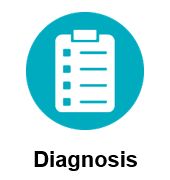This is an excerpt from a recent white paper written
with Dennis Chornenky, Chief AI Advisor, UC Davis Health
and David Lubarsky, Vice Chancellor of Human Health
Sciences and Chief Executive Officer, UC Davis Health. To read the
full white paper, click here.
An effective AI governance model will allow health systems to
take advantage of innovative technologies, while mitigating risks
to patients. There have been a lot of attention-grabbing headlines
about AI replacing physicians, but the more likely scenario is that
it functions as an aid—amplifying the capacity of physicians
and care teams to serve more patients in more tailored ways. The
infographic below highlights a few key ways this may happen.
 |
- Address Information Asymmetry and enable
greater health literacy and patient self-advocacy by providing
rapid plain-language information to patients on their condition as
well as access to second opinions.
- Bridge Language and Cultural Barriers by
making translation tools more readily accessible at the point of
care.
- Improve Access to Care in Under-Served
Communities: AI chatbots, diagnostic algorithms and remote
patient monitoring tools can be used to augment access to primary
and specialty care in geographies that experience provider
shortages.
|
 |
- Enhance Ability to Predict and Prevent
Disease: AI tools can analyze vast amounts of medical
data, enabling more accurate predictions of disease or readmission
based on risk factors that may not be readily apparent to human
observers.
- Improve Patient Engagement by providing rapid
access to tailored information on risk factors and strategies for
patients to prevent escalation—in language that is easily
accessible.
- Allow for More Rapid, Data-Driven Public Health Needs
Assessments and Monitoring to Guide Policy Decisions and Resource
Allocation: AI tools can be useful in predicting outbreaks
and forecasting demand for public health services.
|
 |
- Enhance Diagnostic Accuracy: Misdiagnosis is a
significant issue in health care—the prevalence ranges from
5% to 20%, depending on the disease or condition.1
Misdiagnosis can have serious consequences, leading to delayed or
inappropriate treatments, unnecessary procedures, increased health
care costs and patient harm. Studies have shown that AI tools can
exceed the diagnostic accuracy of human doctors for certain
conditions. With AI, physicians have the benefit of a trained
"co-pilot," and patients can benefit from timelier and
data-backed diagnoses.
- Increase Access to Specialty Diagnostics: AI
algorithms can rapidly assess diagnostic images and biomarkers for
disease risk factors, allowing for greater throughput of diagnostic
screenings and freeing up clinician time to focus on true positives
and complex cases. People in rural, remote or otherwise
under-served areas could access specialist-level review of their
diagnostic tests without having to travel, thanks to AI. One health
system is developing an AI-driven diagnostic tool that analyzes
voice biomarkers to predict coronary artery
disease.2
|
 |
- Provide Efficient and Personalized Treatment
Planning: AI-driven tools have also been able to speed up
the treatment planning process—for example, reducing
radiation therapy treatment planning from days to mere
minutes.3
- Enable to Access to Bedside Decision Support:
The authors of "Foundation models for generalist medical
artificial intelligence" describe a potential future
where AI can not only provide an early warning for an adverse
event, but also provide the rationale and data points to back its
assessment, and recommend a course of intervention, driven by the
latest clinical evidence.4
- Augment Procedures: Today, surgical robots
already provide remote case proctoring. In the future, surgical
robots may be able to annotate video streams of procedures in real
time or raise alerts when procedure steps are
omitted.5
- Allow for Enhanced Remote Patient Monitoring:
Companies continue to develop the capability to monitor patients
with chronic conditions remotely, through the tracking of biomarker
data provided through wearable technologies or phone-based image
capture. These technologies can trigger patient or clinician
intervention to address concerns in real-time.
- Provide Access to Treatment Information through
Patient-Facing Chatbots: LLMs enable the creation of
chatbots that can respond to patient queries and provide guidance.
There are myriad liability issues to work through, but at a basic
level, robust and well-tested models can be an important source of
information for patients to learn about treatment options.
|
 |
- Provide Note Transcription Tools: AI can be
used in note transcription tools to automatically convert spoken
medical information into written text, potentially enhancing
efficiency and accuracy in medical documentation.
- Facilitate Demand Forecasting: Demand
forecasting tools employ predictive modeling to estimate future
patient demand, enabling health care organizations to optimize
staff scheduling.
- Support Billing and Coding: AI can be employed
to automate and streamline medical billing and coding. With
AI-powered automatic coding tools, medical billing professionals
can spend time checking coding rather than doing the data entry
manually. Revenue cycle management is a large expense for health
systems.
|
 |
- Identify Patients for Clinical Trials: AI can
be used to cull EHR data on patients to identify those that may be
eligible for clinical trials, potentially increasing the number of
historically underrepresented patients in clinical trials.
- Support Drug Discovery and Development: AI can
be used to support drug target identification, make efficacy
predictions, individualize drug response predictions and monitor
drug safety and adverse events, among other
things.6
|
Footnotes
1. Newman-Toker, D. E., Wang, Z., Zhu, Y., Nassery, N.,
Saber Tehrani, A. S., Schaffer, A. C., Yu-Moe, C. W., Clemens, G.
D., Fanai, M., & Siegal, D. (2021), Rate of diagnostic errors and serious
misdiagnosis-related harms for major vascular events, infections,
and cancers: Toward a national incidence estimate using the
"Big Three." Diagnosis (Berlin, Germany). https://pubmed.ncbi.nlm.nih.gov/32412440/
2. Malloy, T. (2022, April 26). AI uses voice biomarkers to predict coronary
artery disease - mayo clinic news network. Mayo Clinic. https://newsnetwork.mayoclinic.org/discussion/ai-uses-voice-biomarkers-to-predict-coronary-artery-disease/
3. Meskó, B., Görög, M. (2020) A
short guide for medical professionals in the era of artificial
intelligence. Npj Digital Medicine 3,
126. https://doi.org/10.1038/s41746-020-00333-z
4. Moor, M., Banerjee, O., Abad, Z. S., Krumholz, H. M.,
Leskovec, J., Topol, E. J., & Rajpurkar, P. (2023). Foundation models for generalist medical artificial
intelligence. National Library of Medicine, 616(7956),
259–265. https://doi.org/10.1038/s41586-023-05881-4
5. Ibid.
6. Singh, S., Kumar, R., Payra, S., & Singh, S. K.
(2023). Artificial Intelligence and machine learning in
pharmacological research: Bridging the gap between Data and Drug
Discovery. Cureus. https://doi.org/10.7759/cureus.44359
The content of this article is intended to provide a general
guide to the subject matter. Specialist advice should be sought
about your specific circumstances.








